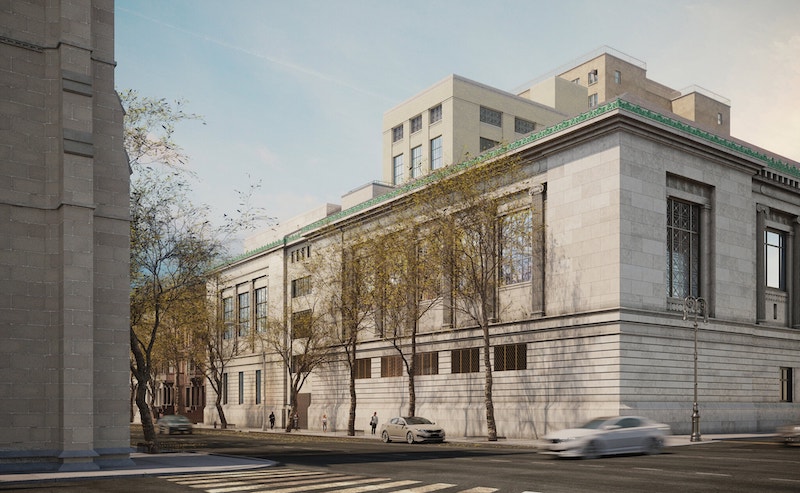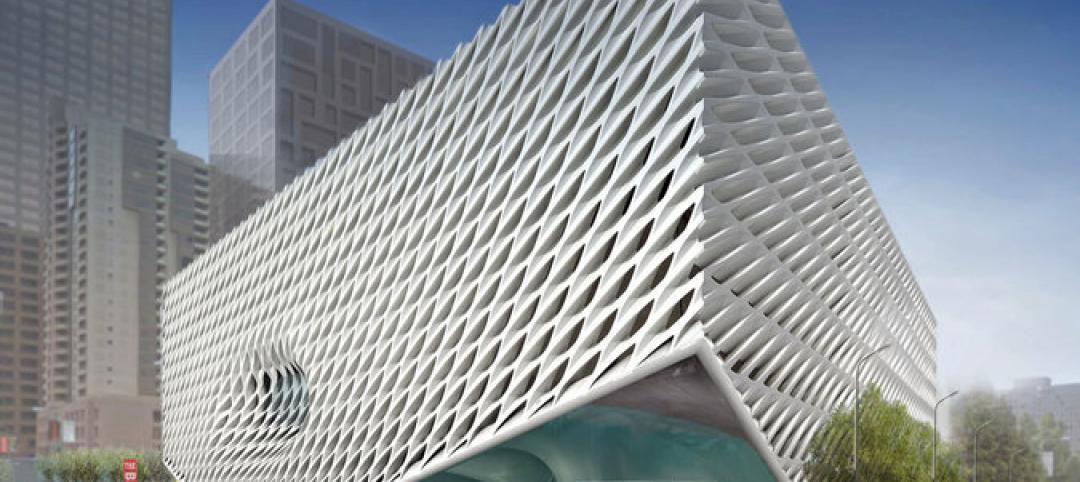The New-York Historical Society Museum and Library, the oldest museum in New York City, is expanding its building on Central Park West by 70,000-sf, which will be used for program space for itself and The American LGBTQ+ Museum.
The Museum is the first in New York dedicated to LGBTQ+ history and culture and make its permanent home at New-York Historical. Upon completion, The American LGBTQ+ Museum will occupy the entirety of the expansion’s fourth floor and encompass two galleries, access to the roof garden, and areas for offices and storage.
The Robert A.M. Stern Architects-designed expansion will also feature classrooms, galleries, collections study areas, and a state-of-the-art compact storage facility for the institution’s renowned Patricia D. Klingenstein Library. The new storage facility for the library will replace the original storage stacks, dating from 1904 and 1937.
SEE ALSO: Maine’s Children’s Museum & Theatre moves into new location that doubles its size
The new classrooms will serve the Academy for American Democracy program, an educational initiative for New York’s sixth-grade students that is transforming the way history and civics are taught in middle school. The new galleries and collections study areas, meanwhile, will host the graduate students from New-York Historical’s Master of Arts in Museum Studies program.
The first phase of the project will begin in summer 2022 and focus on the below-grade library stacks. A second phase will build the galleries, classrooms, and other spaces once target funding is achieved.
Related Stories
| Jun 18, 2014
Arup uses 3D printing to fabricate one-of-a-kind structural steel components
The firm's research shows that 3D printing has the potential to reduce costs, cut waste, and slash the carbon footprint of the construction sector.
| Jun 16, 2014
6 U.S. cities at the forefront of innovation districts
A new Brookings Institution study records the emergence of “competitive places that are also cool spaces.”
| Jun 13, 2014
First look: BIG's spiraling museum for watchmaker Audemars Piguet
The glass-and-steel pavilion's spiral structure acts as a storytelling device for the company's history.
| Jun 12, 2014
Tod Williams Billie Tsien Architects' design selected for new UCSC facility
The planned site is a natural landscape among redwood trees with views over Monterey Bay, a site that the architects have called “one of the most beautiful they have ever worked on.”
| Jun 12, 2014
Austrian university develops 'inflatable' concrete dome method
Constructing a concrete dome is a costly process, but this may change soon. A team from the Vienna University of Technology has developed a method that allows concrete domes to form with the use of air and steel cables instead of expensive, timber supporting structures.
| Jun 11, 2014
David Adjaye’s housing project in Sugar Hill nears completion
A new development in New York's historic Sugar Hill district nears completion, designed to be an icon for the neighborhood's rich history.
| Jun 9, 2014
Green Building Initiative launches Green Globes for Sustainable Interiors program
The new program focuses exclusively on the sustainable design and construction of interior spaces in nonresidential buildings and can be pursued by both building owners and individual lessees of commercial spaces.
| Jun 9, 2014
Eli Broad museum files $19.8 million lawsuit over delays
The museum, meant to hold Eli and Edythe Borad's collection of contemporary art, is suing the German company Seele for what the museum describes as delays in the creation of building blocks for its façade.
| Jun 4, 2014
Want to design a Guggenheim? Foundation launches open competition for proposed Helsinki museum
This is the first time the Guggenheim Foundation has sought a design through an open competition. Anonymous submissions for stage one of the competition are due September 10, 2014.
| May 29, 2014
7 cost-effective ways to make U.S. infrastructure more resilient
Moving critical elements to higher ground and designing for longer lifespans are just some of the ways cities and governments can make infrastructure more resilient to natural disasters and climate change, writes Richard Cavallaro, President of Skanska USA Civil.















